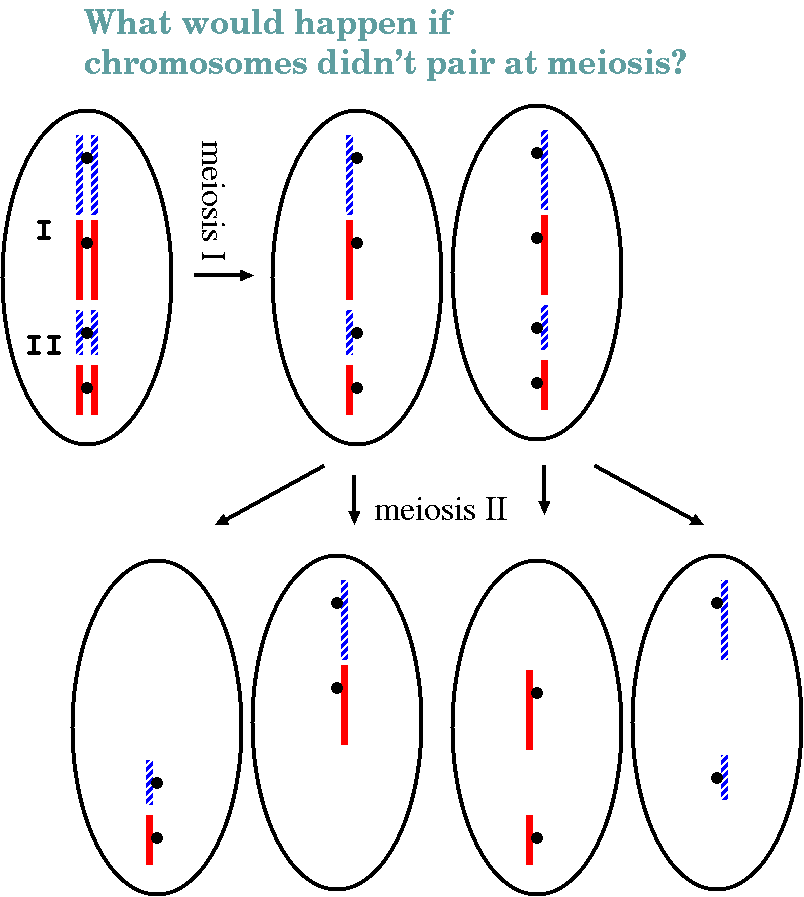
Meiosis is the physical basis of Mendel's laws of independent segregation and independent assortment, which you are likely familiar with from previous classes. As we will see, it is also an elaborate, metabolically costly, and sometimes faulty mode of reproduction. If meiosis has so many downsides then why does it happen? What are the benefits?
Firstly, meiosis creates genetic diversity through the processes of independent segregation and recombination. The prime benefit of genetic diversity is the ability to adapt as a species to different situations. If there is very little genetic diversity in a species, it is much less likely to survive any kind of disease or disaster. The process of independent assortment means that each offspring receives a different 50% portion of each parents' chromosomes. The amount of different combinations that two parents can produce is enormous: in humans, one person can produce 8.4 x 106 different gametes. Genetic recombination provides even more diversity in the combinations of genes that can be produced. Recombination (which will be discussed in more detail later on in this course) also may create new genetic variants.
Secondly, in some organisms with haploid life stages, meiosis can provide a way for the species to get rid of deleterious alleles in the genome. Flowering plants and fungi go through haploid stages as part of their life cycles. In plants, this is the gametophyte generation. Metabolically-active haploid cells must carry out all fundamental cellular functions. Since only one copy of each gene is present, there is strong selective pressure against deleterious alleles in the haploid state. Organisms in the haploid state with too many deleterious alleles simply die, without a chance to pass on their genetic material.
So here lies the problem: in order for meiosis to be carried out to get all these benefits, the cell needs a very accurate way of organizing chromosomes so that each gamete ends up with a complete haploid set of chromosomes. In mitosis, the two homologs for each chromosome can replicate and segregate independently and you'll always come out with a balanced set of chromosomes in each daughter cell. The strategy is simple: just attach a spindle fiber to each centromere from pole to pole, and as long as one chromatid migrates to each pole, each daughter cell will be complete.
But in meiosis, that wouldn't work. In the figure, a diploid with two sets of chromosomes, I and II, has just undergone a round of DNA replication, such that there are now two copies of each homolog. A single reduction division, as in mitosis, would still result in two balanced diploid cells. The problem arises in the second division.

The figure shows one possible outcome for a meiosis in which spindle fibers randomly attached to the kinetochore for one copy of each chromosome, during the second meiotic division. There is no orderly way to undergo a second cell division and be sure that each cell gets one and only one copy each of chromosomes I and II. This is why chromosome pairing, or synapsis, is necessary in meiotic prophase I. By keeping all homologs together, balanced segregation can occur. At the same time, synapsis also provides an opportunity for recombination. You can find an overview of meiosis below:

In meiosis I, the diploid cell contains two homolog of each chromosome, one paternal and one maternal. These replicate in S phase, resulting in two identical sister chromatids. Prophase I begins with pairing of both homolog, resulting in a tetrad containing 4 homologous chromosomes. Crossing over occurs here. As chromosomes continue to condense, the sites of crossing over become visible as chiasmata (anaphase I). Chromosomes begin to separate as they further condense, pushing chiasmata to the chromosomal termini. As in mitosis, chromosomes are aligned between the centrosomes in metaphase I. One kinetochore forms per chromosome pair, rather than one per chromatid. Consequently, chromatid pairs migrate to opposite poles, such that both chromatids at a given pole are derived from a single parent. In telophase I, cytokinesis divides the two diploid cells, and in most species, the chromosomes remain condensed and a nucleus does not re-form.
Premeiotic interphase can result in an increase in nuclear volume 3 to 4 times that of mitotic nuclei, in preparation for the creation of 4 daughter cells.
Prophase I has been split into multiple substages based on how the chromosomes coil. Remember how different early prophase can look from late prophase?

During leptotene, the first stage, there are many independent coiling events occurring simultaneously along the length of each chromosome. The chromosomes appear distinct as long slender threads with many bead-like structures scattered along the length. These bead-like chromomeres are localized aspects of late leptotene coiling that later spreads along the length of the pachytene chromosomes. Remember that prior to prophase I, DNA replication has already occurred.That means that each thin 'thread' contains two identical chromatids, coiled together. The individual chromatids cannot be resolved at this point. Chromosomal termini can be seen to be attached to the inner surface of the nuclear membrane at "attachment plaques". Through a "homology searching" mechanism that is still unknown, the ends of homologous chromosomes migrate together on the nuclear membrane,making it possible for synapsis to begin at the termini.
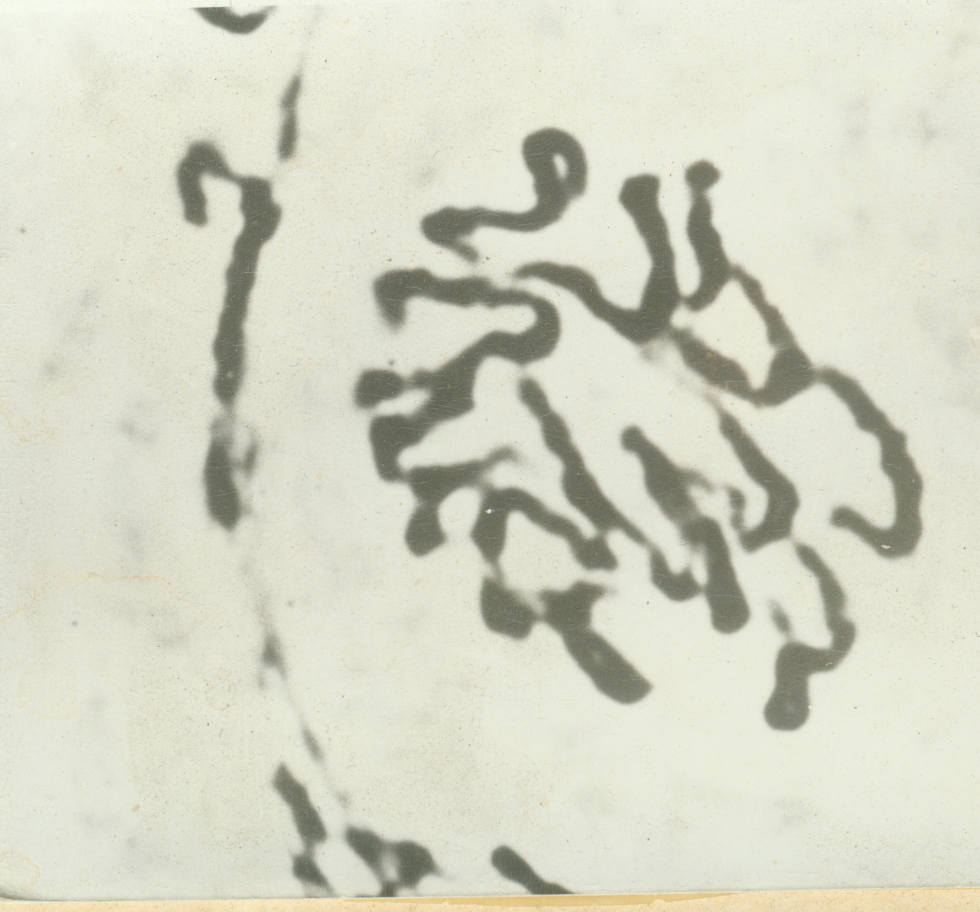
The second stage, zygotene, is characterized by synapsis of homologs. During zygotene, the synaptonemal complex forms.The observation that telomeres appear to cluster together at the beginning of meiotic prophase I (ie. leptotene) suggests that synapsis may be physically coordinated for all chromosomes at a single location. One simple hypothesis is that by bringing all chromosome ends together into a small bundle, it is easier for the homology-searching mechanism to bring both homologues of each chromosome together. Once the ends are together, the chromosomes are "zipped" up together by the synaptonemal complex.
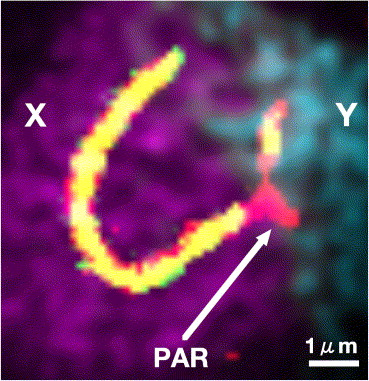
Pachytene is defined as the stage where chromosome pairing is complete, and also where crossing over happens due to the stability of the synaptonemal complex. During pachytene, the chromosomes become shorter and thicker than previously, about 1/5 the length as at leptotene. Crossing over appears to occur within recombination nodules. When crossing over occurs there is a breakage and reunion of chromatin strands.

Pachytene is the stage where the synaptonemal complex is at work such that the chromosomes are fully synapsed, but the synaptonemal complex is still active in the other stages of meiotic prophase I. Make sure you know the state of the synaptonemal complex in each stage.
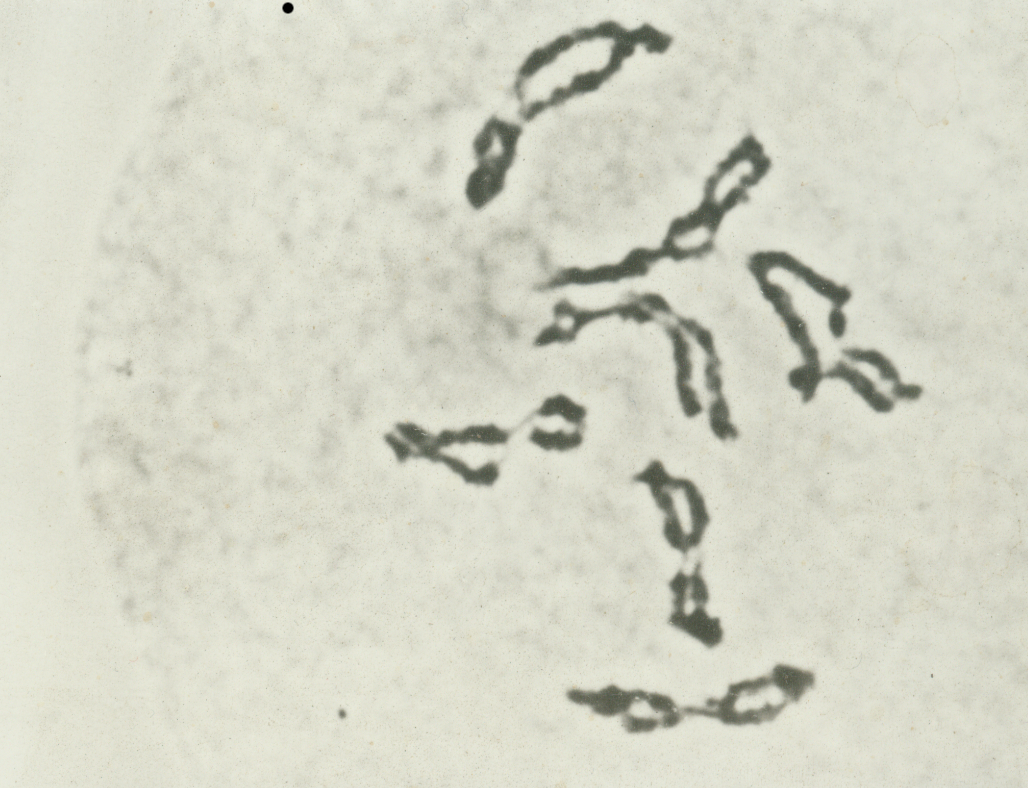
In diplotene, chromosomes undergo desynapsis, which is accompanied by further condensation of chromatin. Chromatids composing the bivalents begin to separate at one or more points, including the centromeres. The individual chromatids may be visible due to contraction and dissolution of synaptonemal complex. The diplotene bivalent consists of two distinct pairs of chromatids which appear to be attached solely at the chiasmata (singular: chiasma ), the X shaped attachments between the chromosomes.
As the centromeres move apart, the chiasmata slide over the cross-over points along the chromatids that are involved in the exchange toward the distal portions. (The physical process is analogous to pulling apart two pieces of rope that are tangled together). As they reach the chromosome ends they become arrested there, forming terminal chiasmata, locked at the telomeres. Extreme tension is exerted on the terminal chiasmata, because the chromosomes are being pulled in opposite directions by the spindle fibers, and the terminal chiasmata are all that hold them together. This process is called terminalization.
In animal oocytes, chromosome decondensation can occur at this point, allowing RNA synthesis. Oocytes produce RNA required for production of proteins during the first few rounds of cell division after fertilization. After RNA synthesis is completed, oocytes can halt at diplotene for years before completing meiosis.
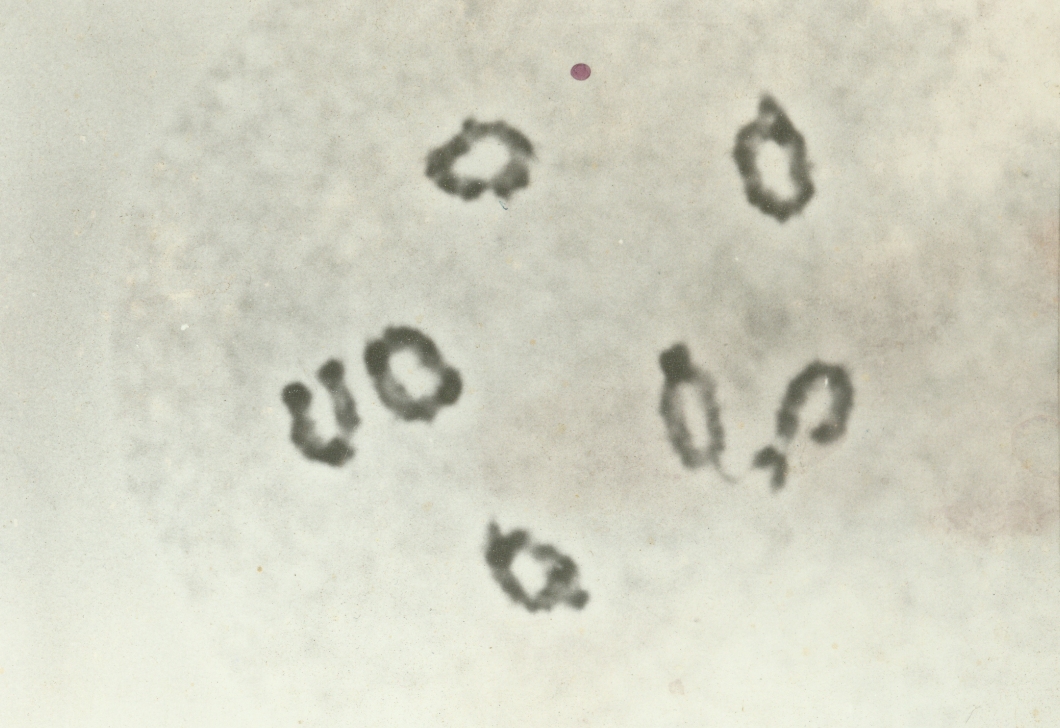
Diakinesis is the final stage of meiotic prophase I. Chromosome condensation continues, and all four chromatids comprising the tetrad are now distinct. Each bivalent is clearly seen to contain 4 separate chromatids, with each pair of sister chromatids linked at their centromere, while non-sister chromatids that have crossed over are linked by chiasmata. This stage is good for counting as the chromosomes are short and thick, well dispersed in the cell. It is easy to get a good spread but this is a short stage. As diakinesis proceeds, the bivalent chromosomes shorten and thicken to become almost spherical so that the double nature of each half of the bivalents is undetectable. Rod or ring bivalents are evident. The nuclear membrane dissolves and the bivalents attach themselves by their centromeres to the rapidly formed spindle.
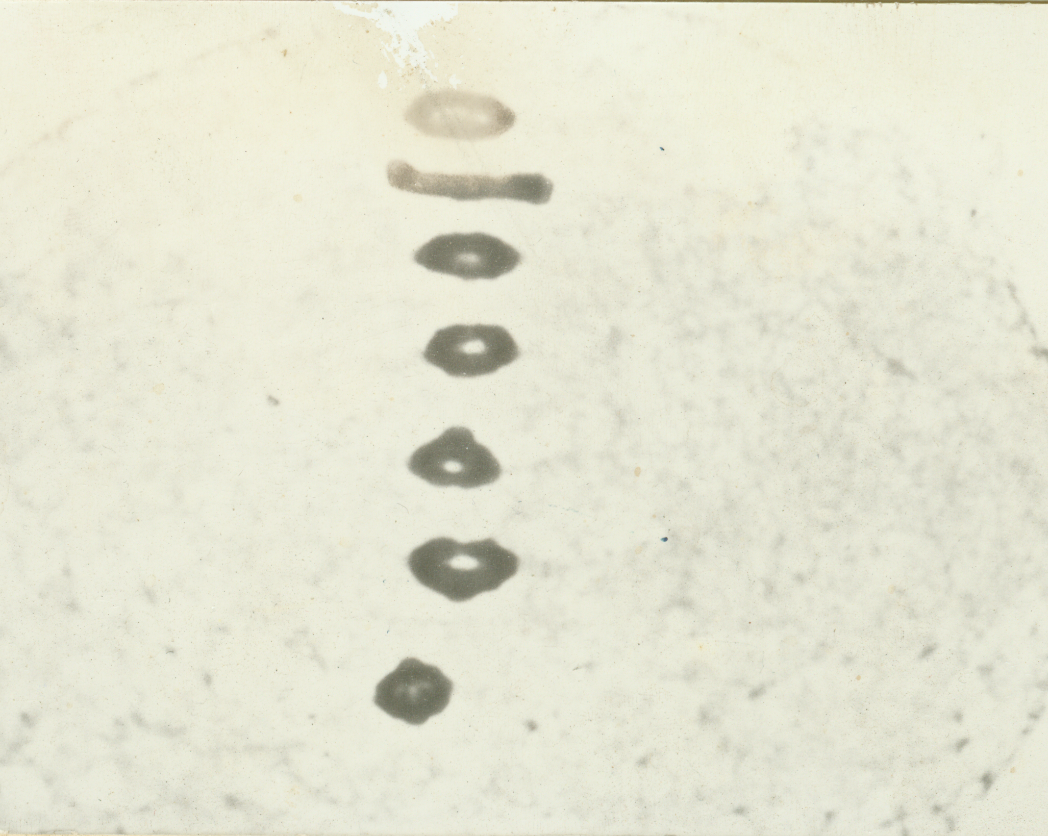
There is a short prometaphase which ends when the bivalent chromosomes are arranged on the metaphase plate of the spindle. The chromosomes are short and thick, and each bivalent has two kinetochores. The two sister chromatids are attached to each centromere of the bivalent. Each of the two centromeres is joined to the nearer pole by spindle fibres. The two halves of the bivalent are joined by one or more chiasma and the shape of the bivalent is determined by the number and positions of chiasmata in each arm. (That is, we don't see a perfect 'X' because of the terminal chiasmata.) As metaphase continues, the centromeres are pulled towards opposite poles, and chiasmata terminalize. There is resistance to separation caused by the remaining chiasmata, causing the chromosomes to appear stretched and thin.
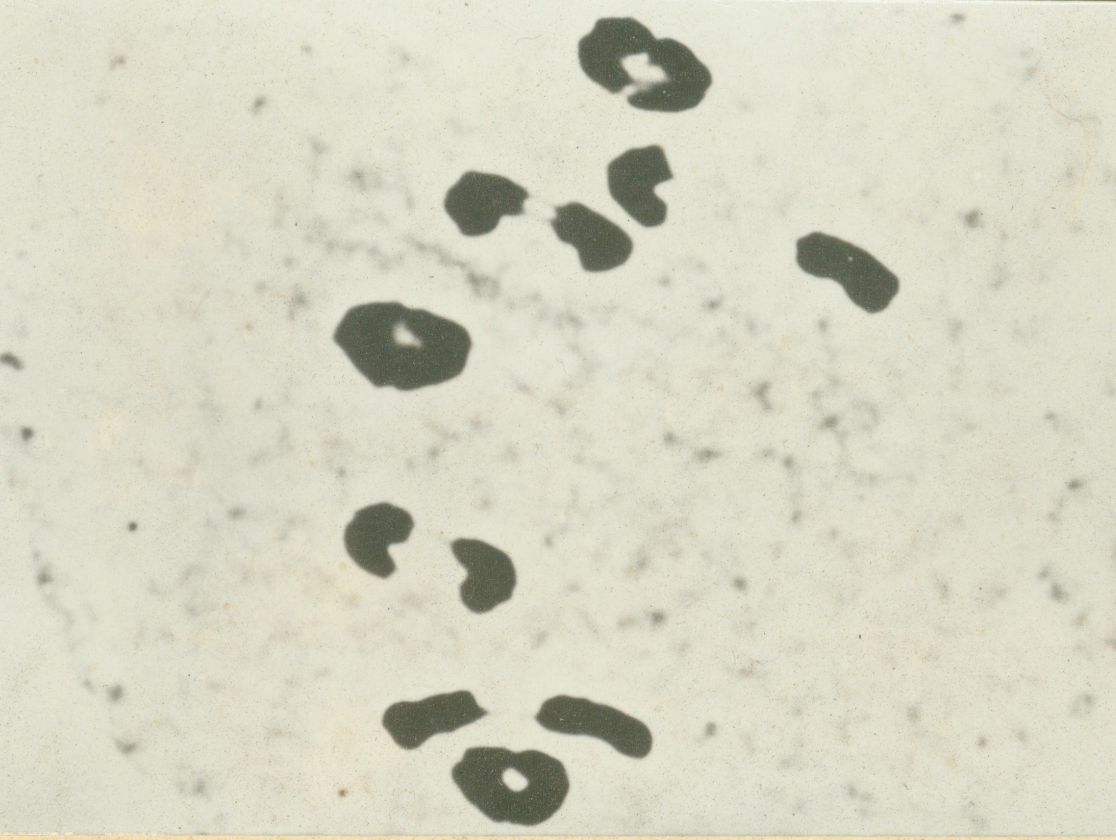
This is a very different appearance from the chromosomes at metaphase in mitosis in which the sister chromatids are held together and located on the equatorial plate.
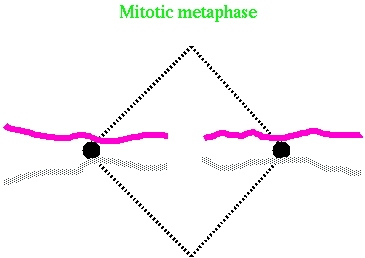
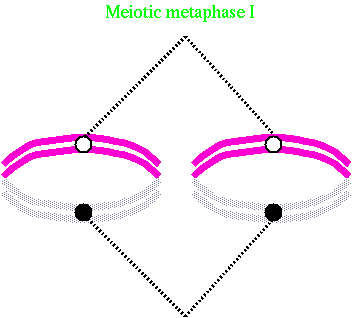
In meiosis, the centromeres of the homologous chromosomes are oriented on the long axis of the spindle equidistant from the equator and the terminal chiasmata are located on the equatorial plate. Equilibrium is established when all bivalent chromosomes have reached the equatorial plate until all chromosomes yield to tension of spindle fibres from opposite poles. This is a good stage for observing chromosome numbers and such conditions of chromosome pairing as univalents, bivalents, trivalents, quadrivalents etc. It is possible to observe the frequency of chiasmata and distribution from whether the bivalent forms an open or closed ring or rod.

There is a single functional kinetochore for both of the sister chromatids of each chromosome. The separation or disjunction of one homologous chromosome from another towards opposite poles results in the single centromere dragging both sister chromatids with it. Under the microscope, we see tetrads converted into dyads, with two arms dangling from each centromere.
During anaphase I, the arms of dyad diverge as the chromatids appear to repel each other. The chiasmata slip off the ends of the chromosomes and the poleward-moving chromatids are bound together at only one point, the centromere. The dyads appear as a double V if chromosome is metacentric or acrocentric and as a single V if telocentric. If no crossover has taken place, the separation is purely reductional. If crossover has taken place, each separating dyad carries part of its homolog, resulting in an equal division of the exchanged chromosomal material to each daughter cell. Chiasmata exchanged at meiosis will redistribute chromosome material from both parents to the daughter cells.
Anaphase I needs to be done correctly, or there are serious consequences for the cell. Any chromosomal connections between the two separating chromosomes form "bridges" often accompanied by fragments of chromosomes that lack a centromere (ie. acentric) and therefore do not move to either pole, lagging on or near the metaphase plate. Another aberration of anaphase I is nondisjunction - the two homologs do not separate and/or both go to the same pole.

Anaphase I is shorter in duration than Metaphase I. The function of the stage is to evenly distribute the partners of homologous chromosomes to the daughter nuclei and this reduces the number of chromosomes by half. If the somatic chromosome number is 2n= 14, the number is reduced to the gametic chromosome number n=7. Somatic counts at mitosis stated as 2n and a chromosome count in meiosis is stated as n.

This stage is similar to mitotic telophase as the chromosomes assemble at the poles. Nuclear membranes and nucleoli may develop and eventually two daughter nuclei with diploid chromosome number are produced. The chromatids are still widely separated from each other and show no relational coiling.
After the first round of meiotic division, the cell takes a short break before the second round. During interkinesis, the chromosomes do not synthesize new DNA and there is no duplication of chromosomes. The chromosomes are already prepared for the second division each consisting of two chromatids only held together by the centromere. Therefore, despiralization, uncoiling and hydration of chromosomes are not necessary.
In prophase II, centrosomes divide again, pulling bivalent chromosomes to the center of the cell. Kinetochores divide, and chromosomes migrate to the poles (anaphase II), followed by telophase II, in which haploid nuclei form. This second meiotic division is very similar to a mitotic division - so we'll just show you some examples.
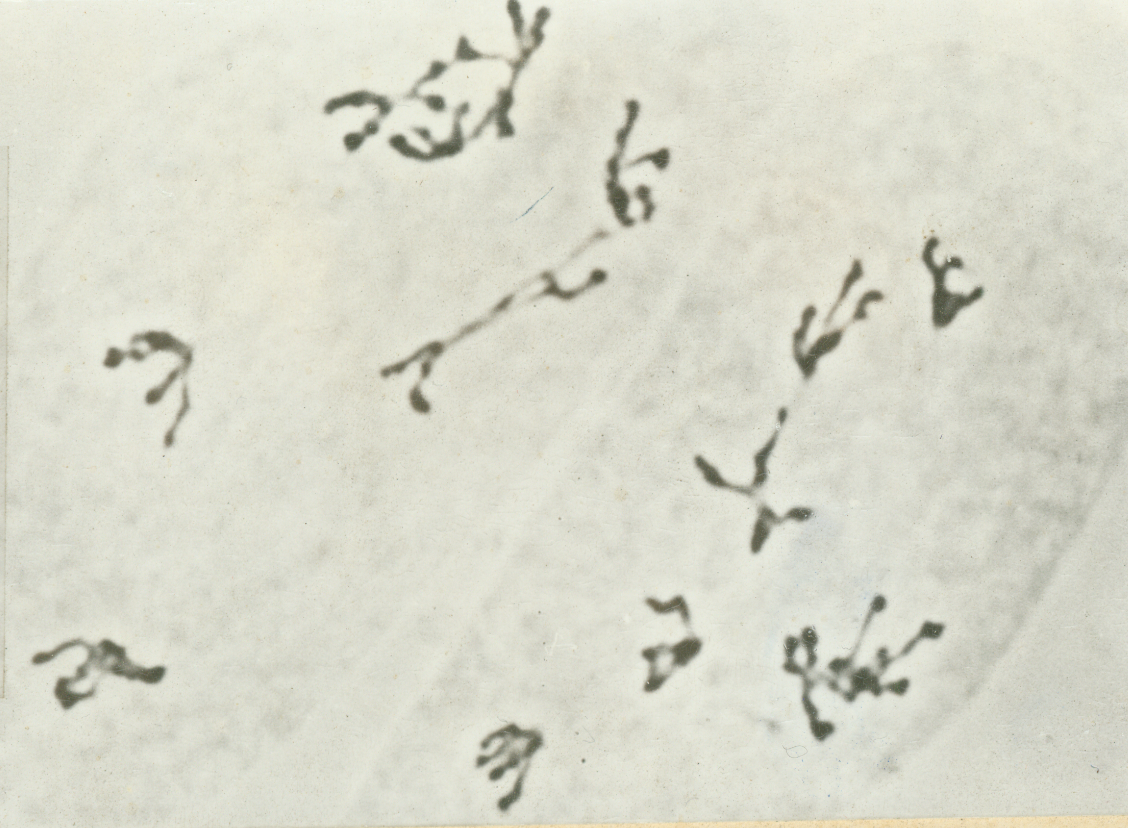
Prophase II differs from Prophase I in appearance as the sister chromatids arms are widely separated from each other. This makes the dyad arms look like crosses and the shortness of the partially coiled chromosomes makes it easier to count chromosomes.
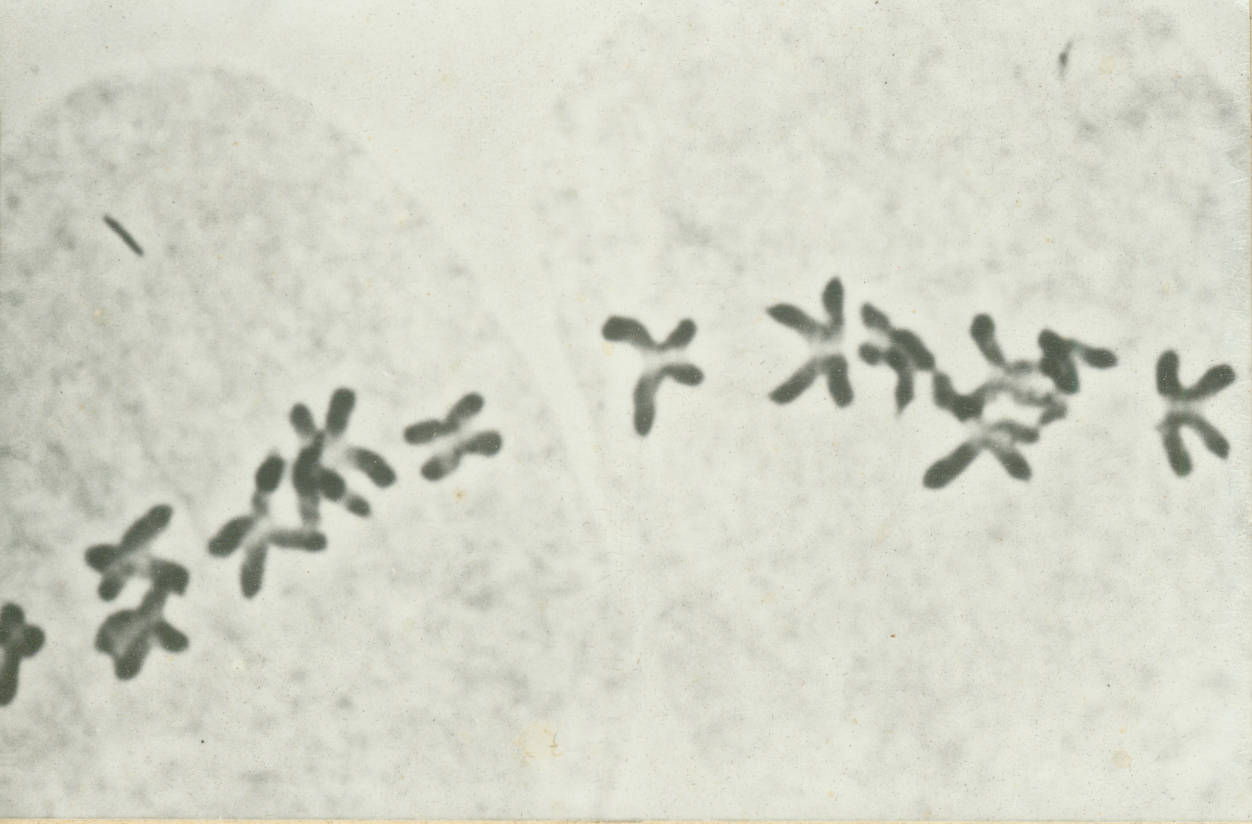
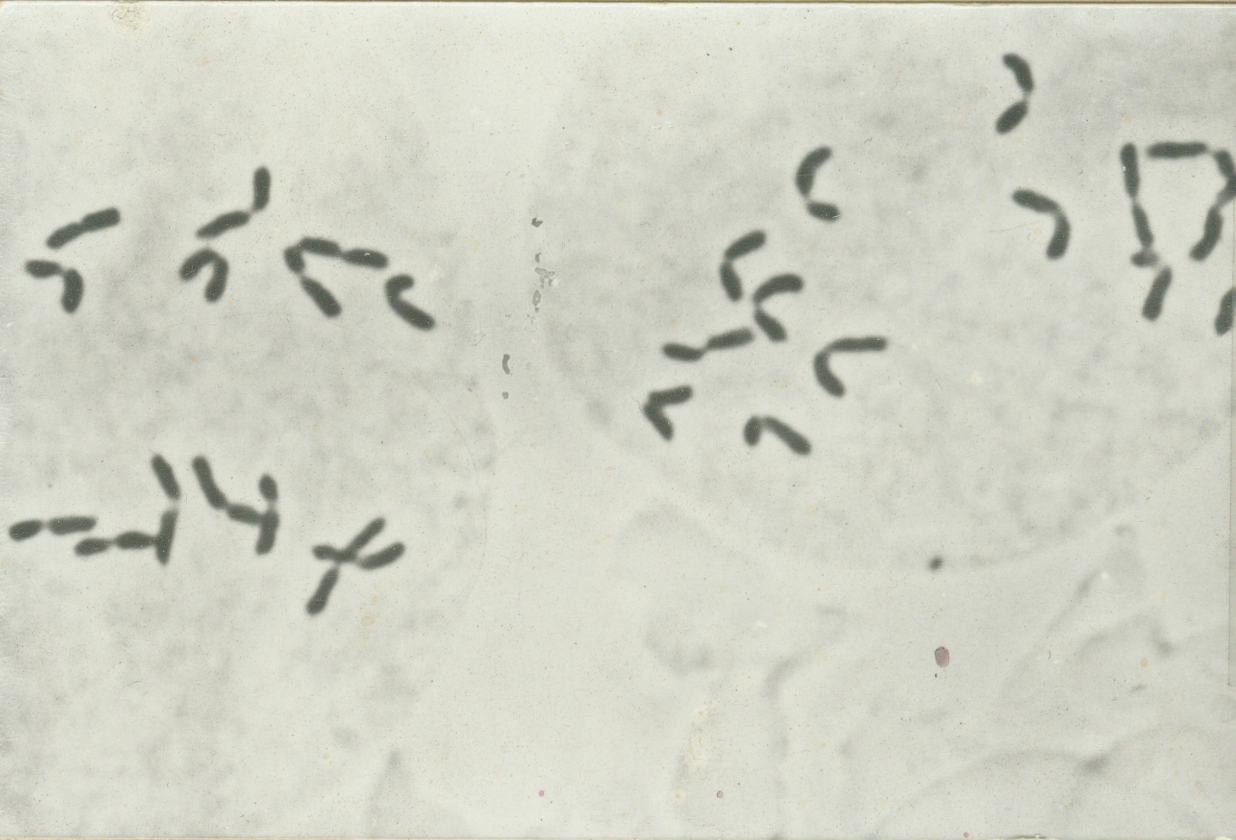

The primary function of meiosis in sexually-reproducing species is to produce gametes. This process, called gametogenesis, varies in details among the higher eukaryotes. However, almost all gametogenic processes involve asymmetrical cell division in some way. The examples we've just seen are from gametogenesis of rye anthers, which you might recall is the 'male' gamete in plants. This process produced four similarly sized cells. Certainly they contain different genetic information (that's the whole point of meiosis!), but they are functionally and structurally similar, if not mostly identical. Once meiosis is finished, each haploid cell, called a microspore, develops further into a pollen grain.

Let's look at the gametogenesis process on the 'female' side. In plants, this process is called megasporogenesis. After going through meiosis, the 4 resulting cells do not each form an ovum. Instead, three of the cells are designated as polar bodies, and the primary nucleus undergoes further divisions. One nucleus from each pole known as polar nuclei migrates to the middle of the embryo sac and the two nuclei fuse to give rise to a secondary nucleus or polar fusion nucleus with 2n chromosome constitution. At the micropylar end of the embryo sac, one nucleus differentiates into an egg cell and the remaining nuclei become synergids, part of the egg apparatus. The other three nuclei are called the antipodal nuclei. During pollination in higher plants, the tube nucleus of the pollen grain directs the growth of the pollen tube down the style, through the micropyle and into the nucellus. The two sperms are released into the nuclear sac. The end result, after fertilization, is an ovum with 2N chromosomes, surrounded by a 3N endosperm.

In humans, the process is similar in some ways and different in others.